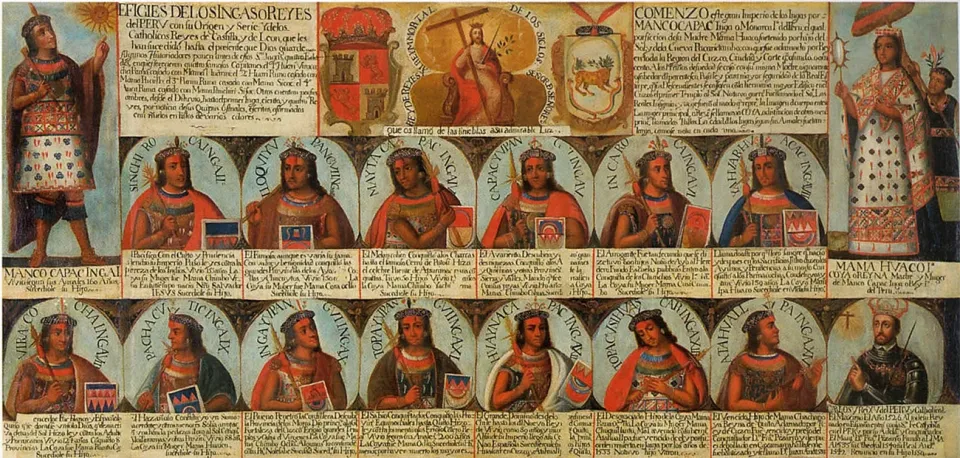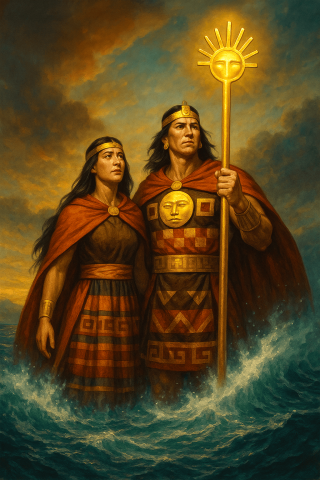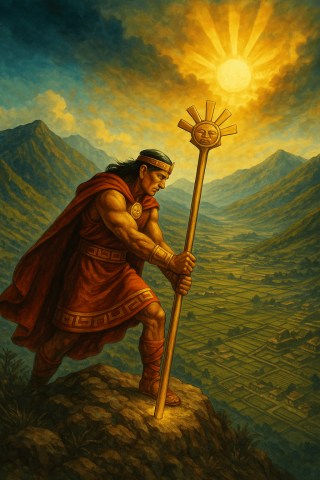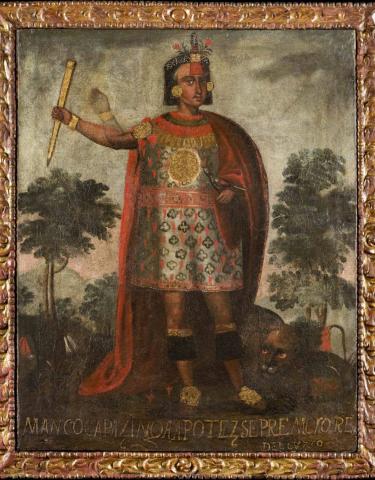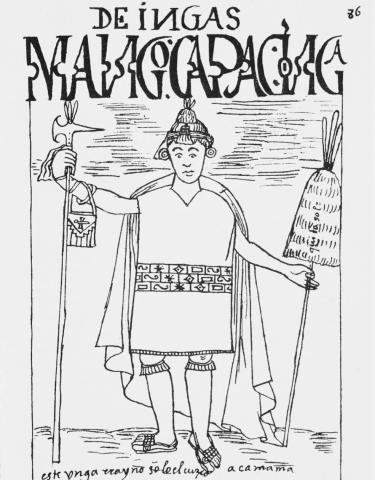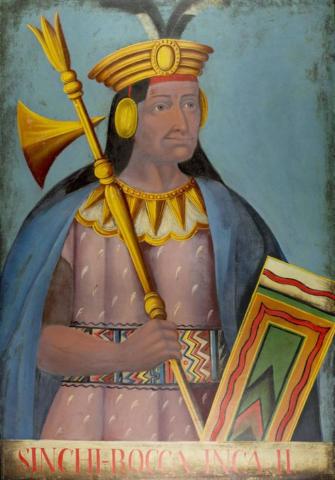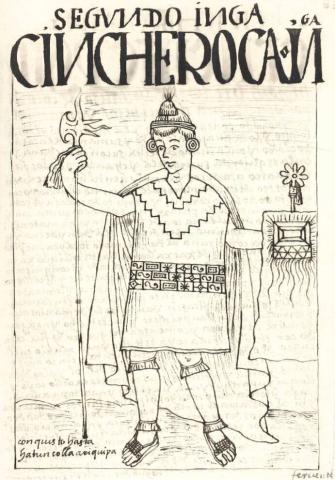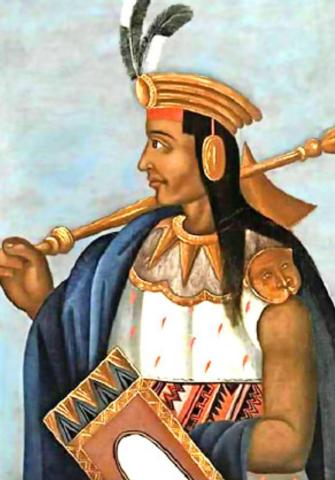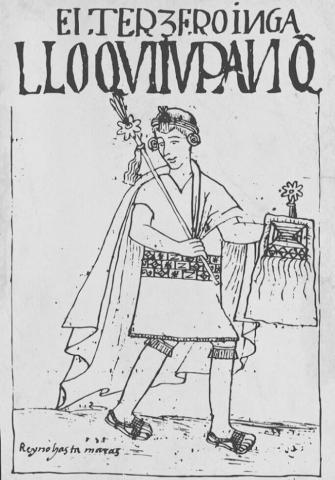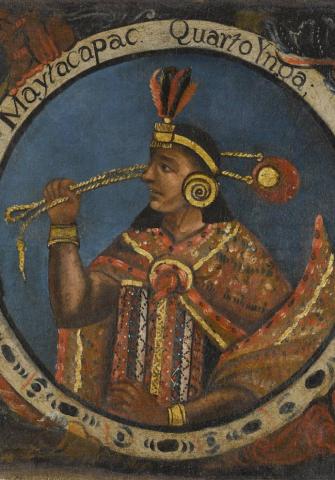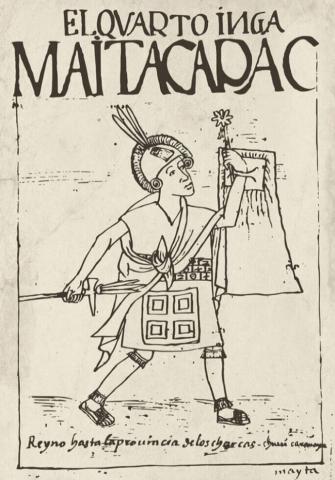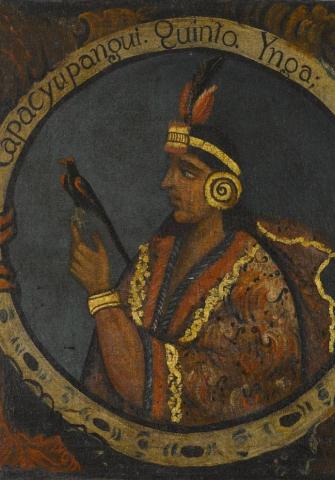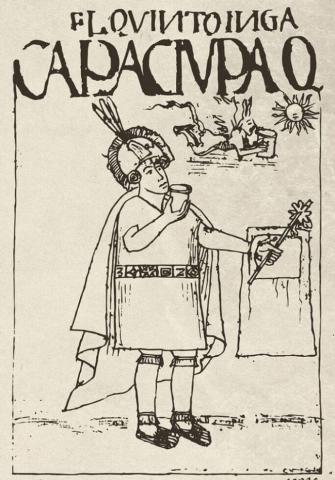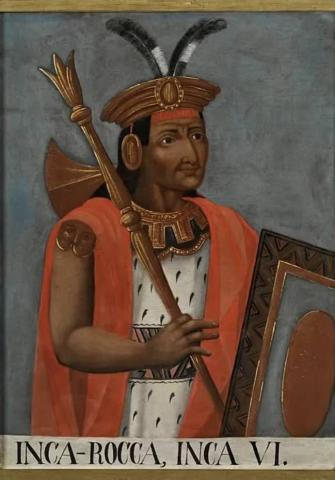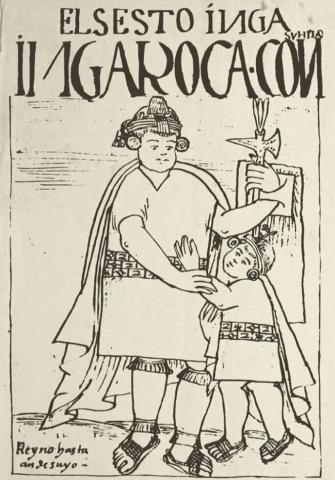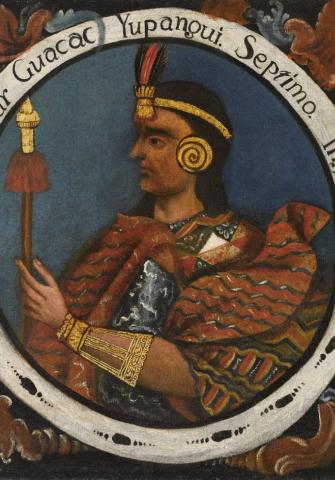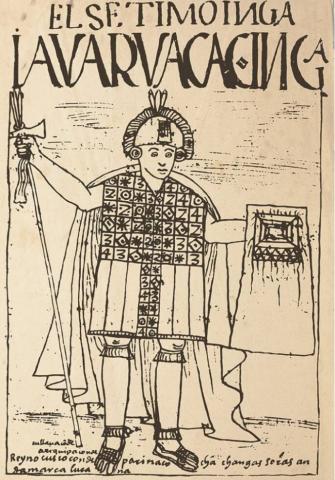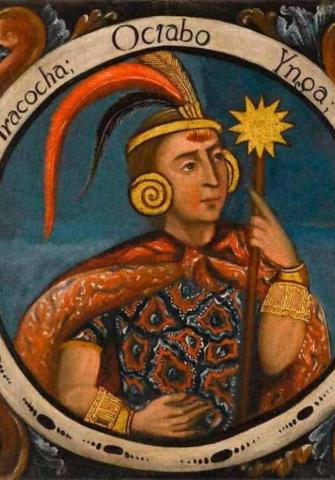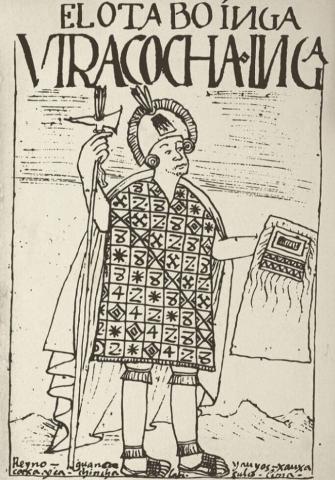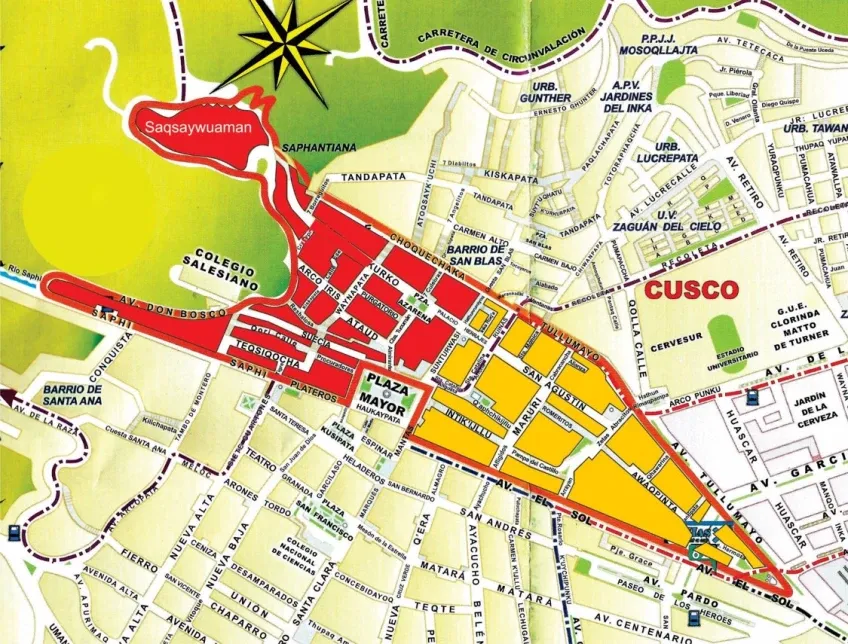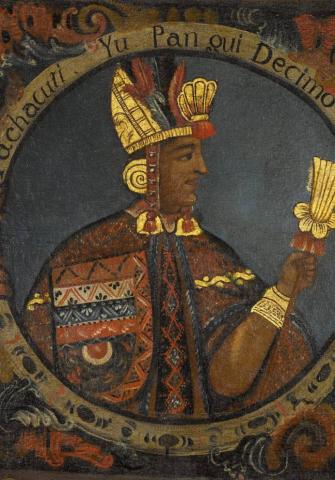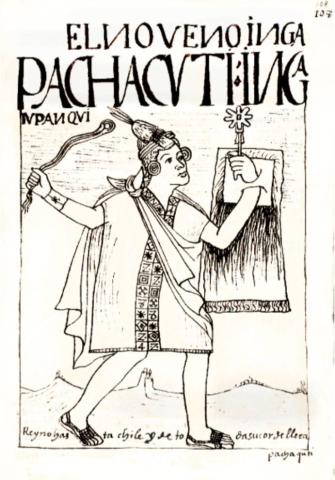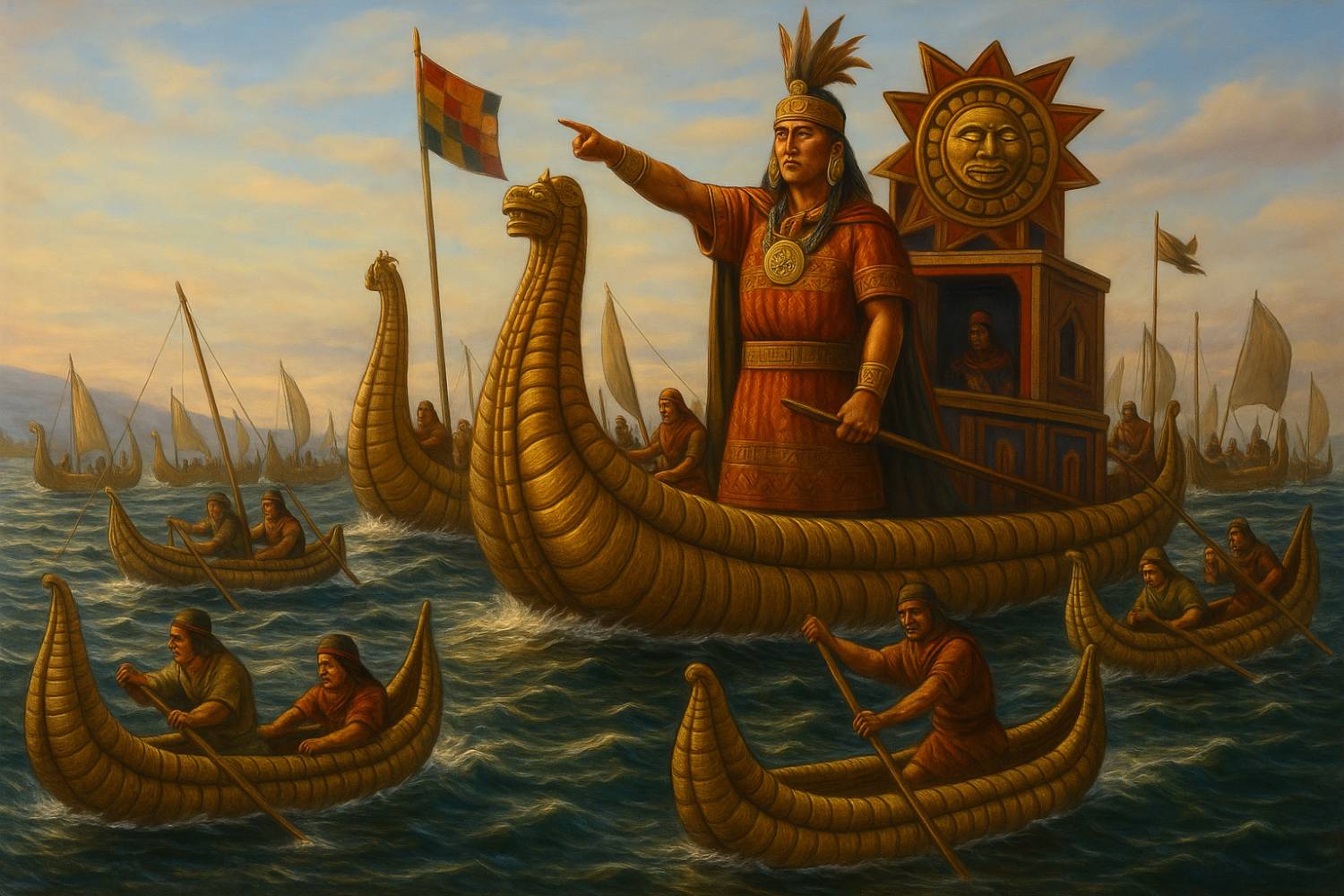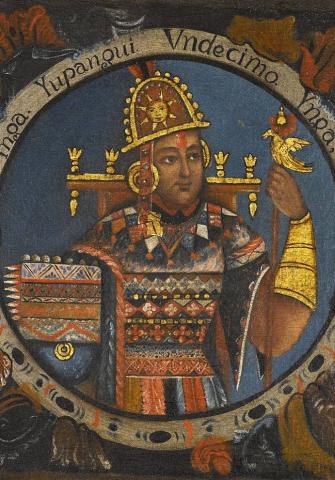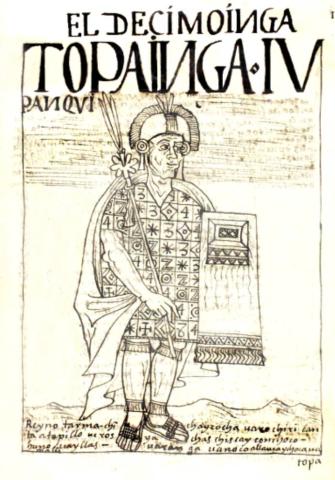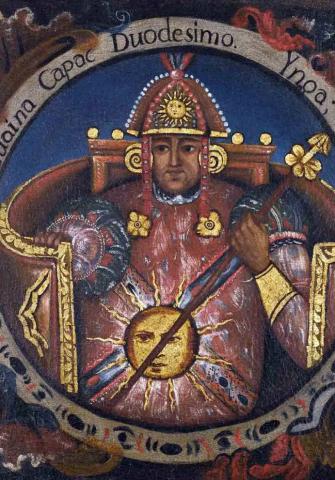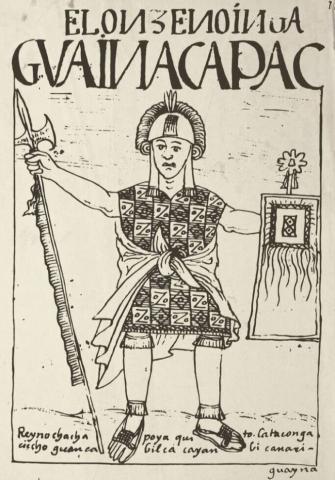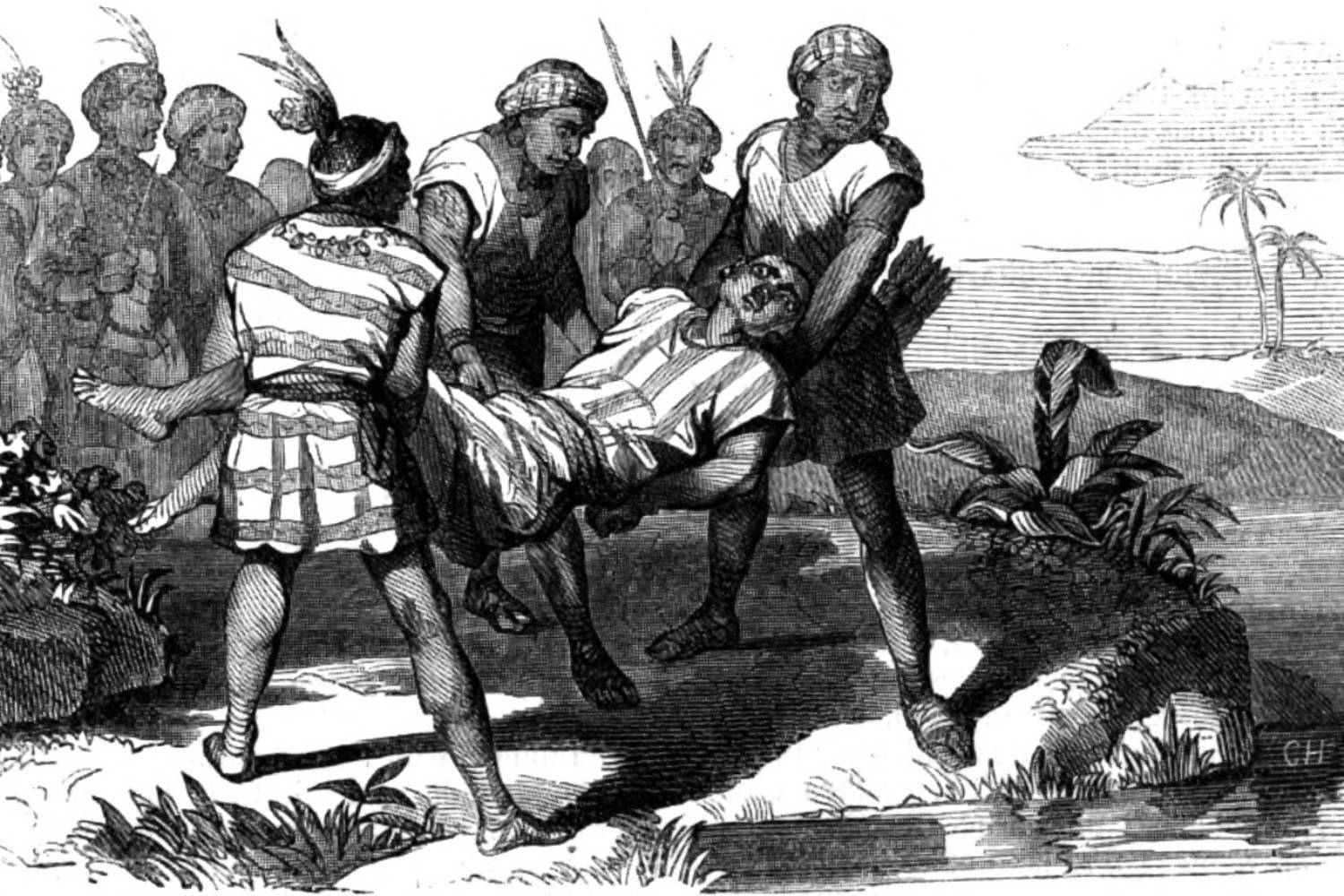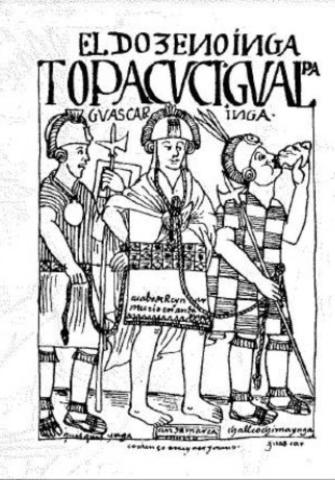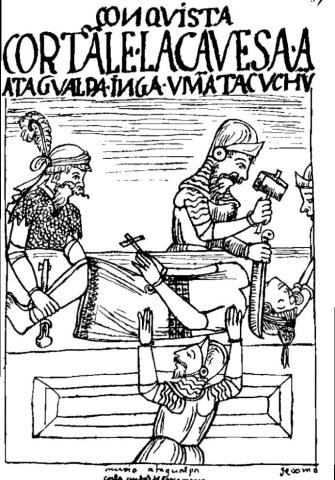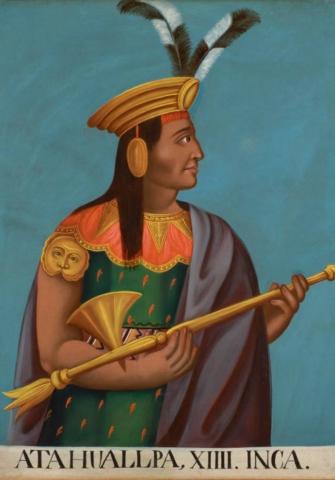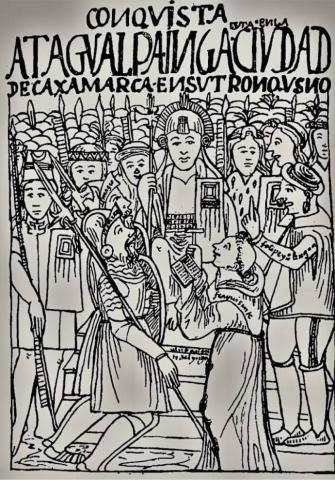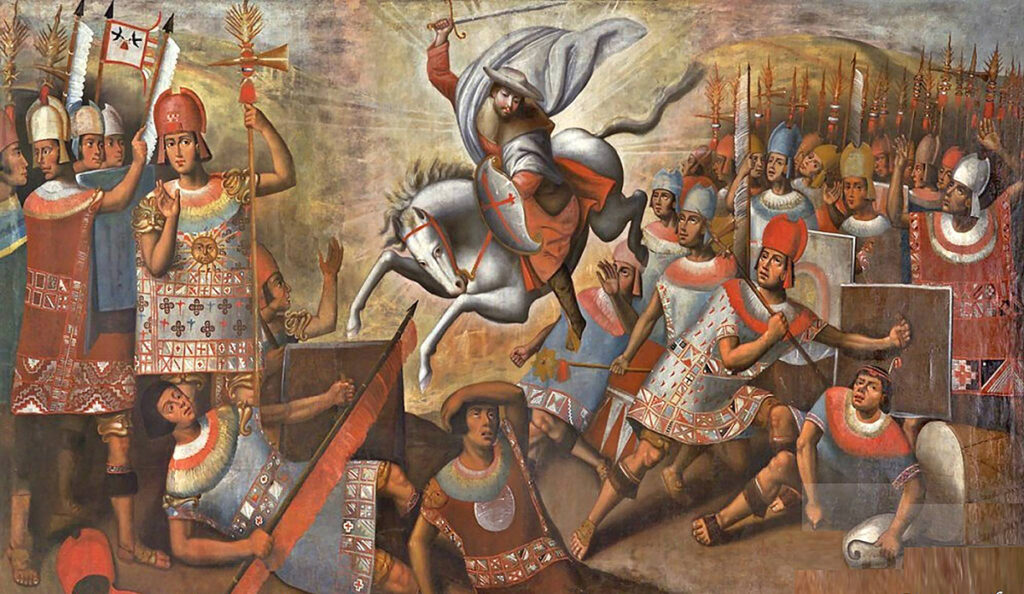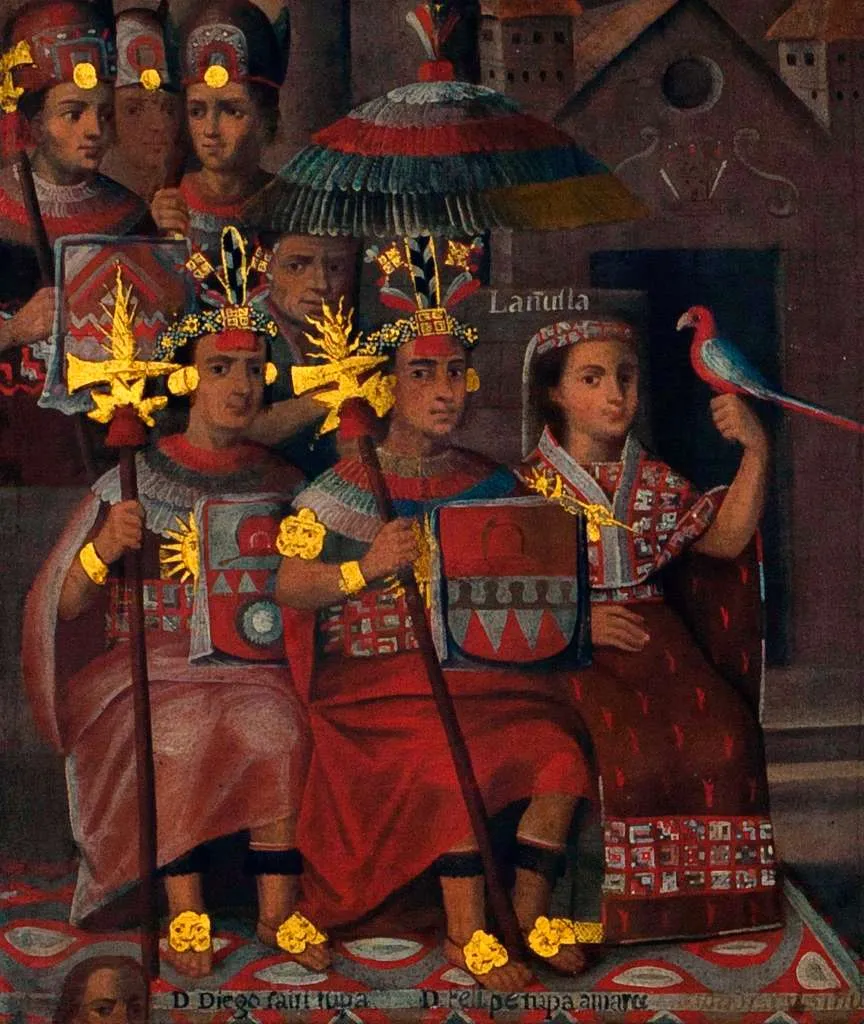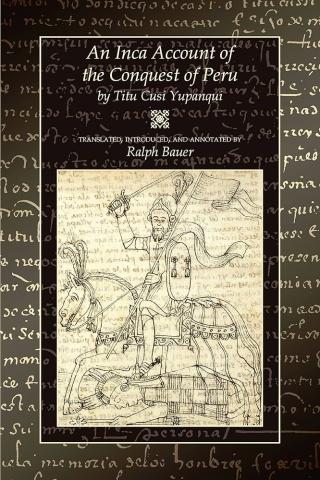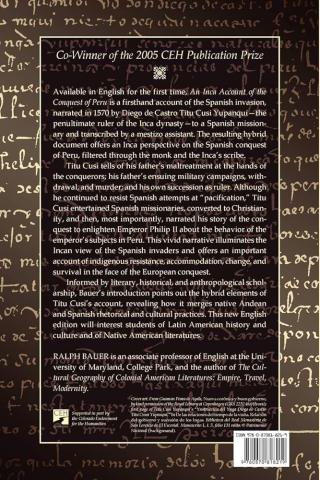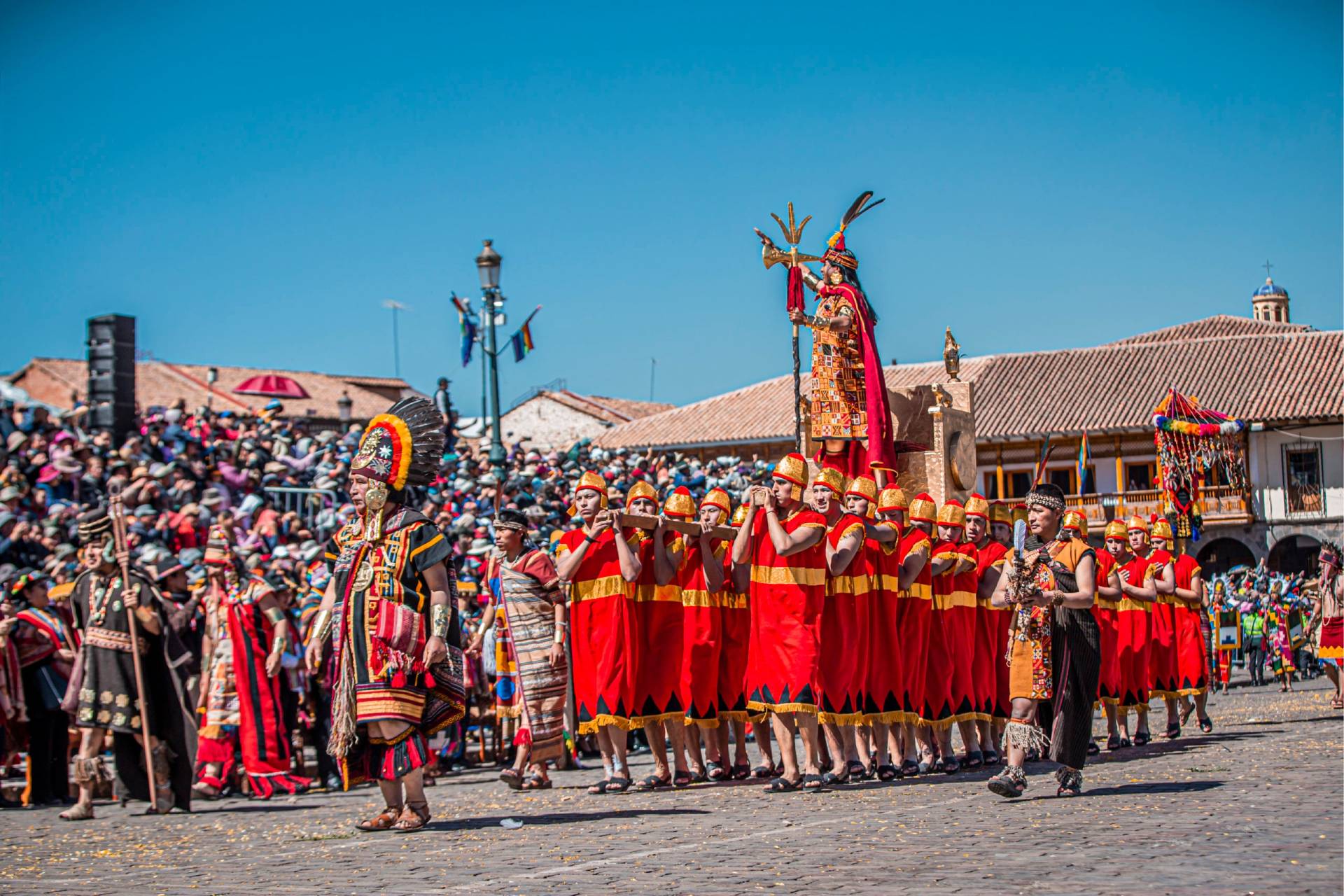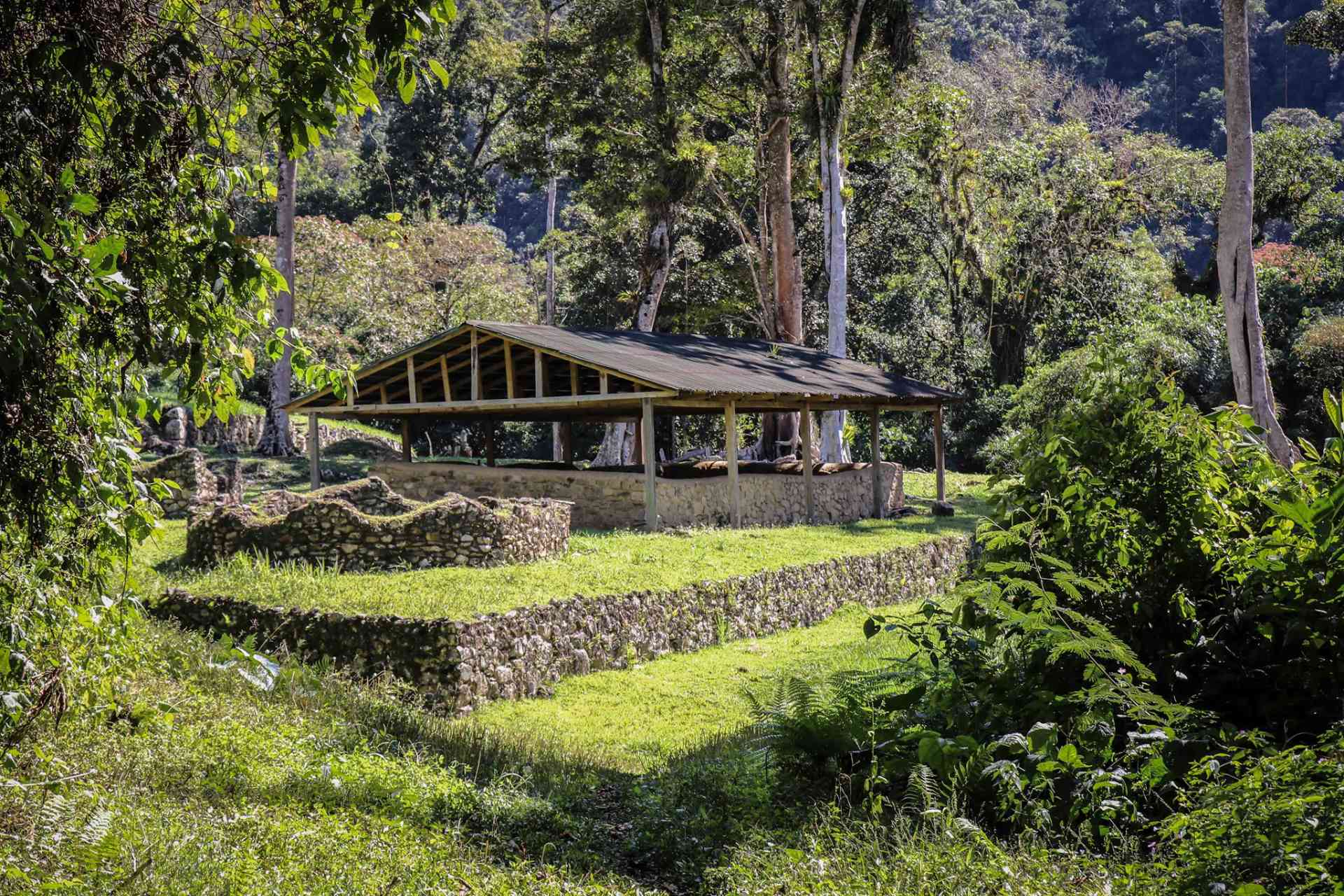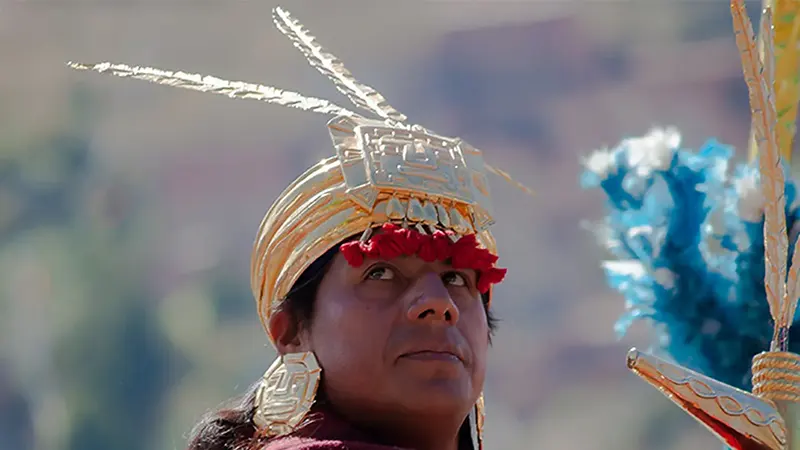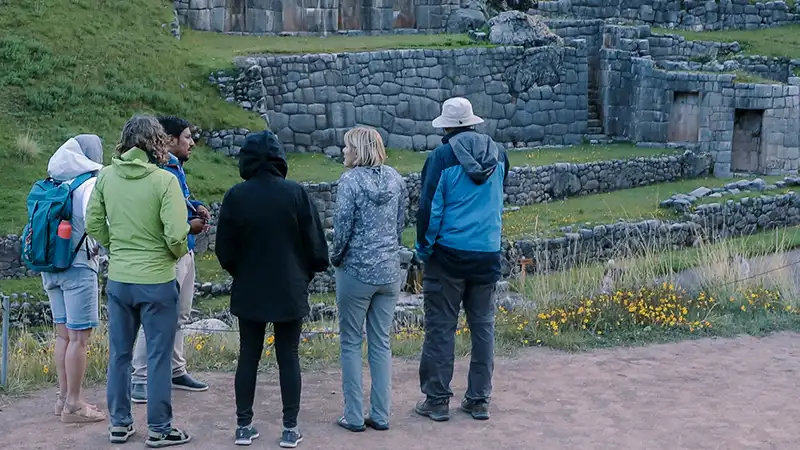Did you know that the Inca emperors ruled an empire so vast that it encompassed more than 30 languages and 100 ethnic groups, without the need for money or prisons?
Their story is not just a memory in stone ruins: it is the chronicle of how visionary leaders, one after another, turned mountains into cities, weaved alliances and built the largest empire in South America.
What was the role of an Inca emperor?
The Tahuantinsuyo was one of the largest cultures of Pre-Columbian America. Its territory covered the current Peru, Ecuador, Bolivia, Chile and Argentina, organized in four regions called suyos, with Cusco as its capital.
In this city resided the Sapa Inca, the highest authority of the empire. The people saw him not only as a ruler but also as the son of the Sun, granting him an essential sacred and political role.
The Sapa Inca concentrated the political, military, religious and symbolic power of the Tahuantinsuyo. His role integrated with the state organization and the Andean cosmovision, ensuring balance and order.
Main functions
- Absolute ruler of the empire: The Inca made decisions on territorial expansion, resource management, the work system (such as mit'a) and internal order. His word was law.
- Maximum military chief: He personally directed the conquest campaigns or appointed generals. Incas such as Pachacútec and Túpac Yupanqui led battles to expand the empire.
- Representative of the Sun God (Inti): As son of the Sun, he had a sacred role and participated in rituals, offerings and religious ceremonies. This connection legitimized his authority.
- Distributor of land and resources: The Inca assigned land to the ayllus (communities), organized collective work and supervised the distribution of food stored in tambos and colcas.
- Protector of the people: The Inca had to watch over the welfare of the people. In times of drought, war or illness, his responsibility was to guarantee the survival of the empire.
The Sapa Inca united the divine, the political and the human, leading with wisdom and strength. This leadership consolidated the Tahuantinsuyo as a power in engineering, agriculture, and astronomy, despite lacking a writing system.
Origin of the Incas
According to legend, the first Inca was Manco Capac, son of the Sun God. Together with his sister Mama Ocllo, he emerged from Lake Titicaca to found the city of Cusco, the center of the future empire.
Although there is no historical evidence of his existence, Manco Capac symbolizes the beginning of the Inca royal lineage and the birth of their culture.
The first rulers established the Kingdom of Cusco, setting the stage for the imperial expansion that Pachacutec later consolidated as he transformed Tahuantinsuyo into a vast empire.
Pachacutec reorganized the state, implemented reforms and expanded the territory through conquests. His leadership efficiently integrated the new lands into the Andean way of life.
The legend of Manco Capac and Mama Ocllo is not the only one about the Inca origin. There is also the legend of the Ayar Brothers, which narrates another myth of the foundation of the empire.
Inca dynasties
The Inca dynasties were the royal families from which the next Sapa Inca arose. Although fathers sometimes passed the throne to their sons, they did not always follow the rule of primogeniture.
The Incas chose the fittest and most capable son, known as Auqui (crown prince), who had to demonstrate political and military skills, guaranteeing the continuity and expansion of the empire.
The Inca also considered the choice of his wife, the Coya, crucial since she not only conceived and raised future leaders but also accompanied him in religious ceremonies, symbolizing balance and power.
Now, if you wonder how two dynasties existed, here is the explanation:
Hurin Cusco (Cusco below)
The empire began with the Hurin Cusco dynasty, whose rulers were:
- Manco Capac
- Sinchi Roca
- Lloque Yupanqui
- Mayta Capac
- Capac Yupanqui
At this stage, the government was more local, associated with the mythical origins of Cusco. This dynasty ended when Capac Yupanqui died without designating a successor accepted by the elite.
Hanan Cusco (Cusco above)
The elite elected Inca Roca as the new Sapa Inca when no successor appeared, and although Capac Yupanqui was his father, the royal panaca, not his father, proclaimed him. This marked the beginning of a new dynasty and a new political order.
This system of election brought benefits, but also conflicts between lineages that aspired to power, generating internal wars.
The rulers of the Hanan Cusco dynasty were:
- Inca Roca
- Yahuar Huácac
- Viracocha Inca
- Pachacútec
- Túpac Yupanqui
- Huayna Cápac
- Huáscar
- Atahualpa
Thanks to this leadership and organizational structure, the Tahuantinsuyo was able to grow and sustain itself as one of the most advanced civilizations in Pre-Columbian America, excelling in architecture, terraced agriculture, astronomy and road systems.
Chronology of the Inca emperors
Here are the Inca emperors in order, from the legendary founders to the last ruler who faced the conquistadors.
1. Manco Capac
He was the first Inca Sapa and founder of the empire, according to the most ancestral legend. Together with his wife, Mama Ocllo, he emerged from the waters of Lake Titicaca by order of his father, the god Inti (Sun), who commissioned them to search for fertile lands. To find out if the place was suitable, Inti gave them a golden rod that they had to sink into the ground; if it sank easily, it was a sign that they should found their empire there.
They traveled through several places until they reached the present valley of Cusco, where the golden rod sank into the Wanakawri hill, a sign that they should settle there. Manco Capac founded Cusco and began to expand by conquering nearby towns. He also built the Inticancha (today's Coricancha), a temple dedicated to the Sun God, which also served as his palace.
Did you know?
Manco Capac's name translates as “Ancestor”. This meaning, along with his mythical origin, gave him the status of demigod among his people. Not only did he lead his people, he also taught them to grow potatoes and herd llamas.
Meanwhile, Mama Ocllo, his wife, taught them the art of weaving, thus strengthening the foundations of daily life in the nascent Cusco.
- Principal achievement: Foundation of Cusco and establishment of the Inca dynasty.
- Approximate reign: 1200-1230
- Dynasty: Hurin Cusco
2. Sinchi Roca
Son of Manco Capac, Sinchi Roca was the first Inca to wear the Mascapaicha, the royal insignia, and married Mama Cuca, daughter of an important local chieftain. He personally conducted the first census of the Inca people during his government and ordered his family to pierce their ears as a symbol of nobility, earning them the name “orejones”.
Among his achievements was the drainage of wetlands in Cusco, converting swampy lands into agricultural areas, including what is now the Main Square. In addition, he bravely resisted incursions by tribes such as the Pinahua, proving to be a skilled strategist with his spears and forging alliances that strengthened the defense of his territory.
His name translates as “strong” or “warrior”. A storm raged during his birth, but the sun shone just as he entered the world, and the smiling villagers took it as a sign of hope, saying: “Inti supports us.”
Sinchi Roca not only strengthened order in the nobility, but also established the tradition that all families, regardless of their status, shared resources such as land, labor and dried llama meat. This system ensured that no one starved to death, even during times of drought.
- Main achievement: Organized the first social structures of Cusco and stabilize the empire
- Approximate reign: 1230-1260
- Dynasty: Hurin Cusco
3. Lloque Yupanqui
The Inca elite chose Lloque Yupanqui, though he was not the first-born, for his intelligence and abilities. He married Mama Cagua, daughter of an ethnic leader from the south of Cusco, consolidating important alliances for his government.
During his reign, he founded the Acllahuasi (House of the Virgins of the Sun), conquered the salt mines of Maras and managed to dominate the region of the Ayamarcas. He also created the first kantu, a market for the trade of local products, thus strengthening the internal economy of the Tahuantinsuyo.
Lloque Yupanqui innovated agriculture by designing and building irrigation canals and seeking new ways to water difficult lands, which allowed quinoa to grow in complex soils. These advances laid the foundations for the terraced agriculture that would develop in the future.
Lloque Yupanqui faced various revolts, resolving them on many occasions with diplomacy and negotiation before resorting to battle. Chronicles recount how he defeated several rivals peacefully and consolidated peace in the region.
His name means “memorable left-handed”, since he mastered with great skill the art of khipus using his left hand. Lloque Yupanqui, a dreamer Sapa Inca, committed himself to improving his people’s lives, going so far as to draw a map to transform Cusco into a more organized and prosperous city.
- Main achievement: Peaceful government with limited expansion and internal consolidation.
- Approximate reign: 1260-1290
- Dynasty: Hurin Cusco
4. Mayta Capac
Mayta Capac ascended to the throne with barely eight years after the sudden death of his father, counting on the support of his uncle, who helped him in the first years of government. Despite his youth, Mayta Capac led with firmness and courage, conquering nearby tribes like the Alcabisas and the Culunchimas, and becoming the first Inca to reach the coast.
During his reign, he subdued several ethnic groups, including the Tiahuanaco, commanding an army of 1,200 men, and led expeditions into the Apurimac and Arequipa regions. According to legend, the name Arequipa originated during one of these expeditions, when one of his captains asked to settle in the valley and the Inca replied in Quechua: “Ari, quipay” (“Yes, stay”).
Mayta Capac stood out not only for his military strength, but also for his strategic capacity. He reformed the mit'a work system, making it mandatory only for projects considered essential, such as the construction of chuño warehouses, which were vital for sustaining armies during their campaigns.
The name “Mayta” translates as “noble, where are you?”, a reflection of his adventurous spirit. Many consider him the model that defined the path for future Sapa Incas.
He married Mama Tancaray and named his son Tarku Waman as his heir. However, his cousin Capac Yupanqui defeated him and eventually succeeded him on the throne.
- Main achievement: Strengthened military power and initiated incursions into new territories.
- Approximate reign: 1290-1320
- Dynasty: Hurin Cusco
5. Capac Yupanqui
Cápac Yupanqui took the power after murdering eight or nine brothers of Tarku Waman, the legitimate heir, whom he exiled to the region of Anta as governor. Thus, he became the fifth and last ruler of the Hurin Cusco dynasty.
He married Kurijilpay, daughter of a curaca of the Ayamarca, establishing a strategic alliance against the Chancas of Apurimac, who at that time were more numerous than the Incas. In addition, he conquered Masca and Pinahua through military campaigns and carefully planned marriage alliances.
According to historians like John Rowe, during his government the first urban grid of Cusco was born, consolidating the city as the capital of this nascent empire.
During his reign, he faced numerous internal conflicts, as the local curacas maintained power disputes that he had to resolve firmly. However, Cusi Chimbo, one of his concubines, likely poisoned him out of jealousy and in conspiracy with the Hanan Cusco faction, bringing his story to a tragic end.
After Cápac Yupanqui died, conspirators assassinated his heir, Quispe Yupanqui, allowing the Hanan Cusco faction to seize power and place Inca Roca, son of Cápac Yupanqui, on the throne.
His name means “noble accountant”, a title that reflected his fascination for observing the stars and naming the constellations, an activity he carried out with dedication during his government.
- Main achievement: He took the conquests beyond the Cusco valley, opening the way for imperial expansion.
- Approximate reign: 1320-1350
- Dynasty: Hurin Cusco
6. Inca Roca
Inca Roca was the first ruler of the Hanan Cusco dynasty, acceding to power after a coup against the Hurin Cusco. He became the first leader to officially assume the title of Sapa Inca (Supreme Leader) and balanced tensions between factions by allowing the Willaq Umu (Supreme Priest) to maintain control of the Inticancha.
He married Mama Micay, daughter of the leader of the Wallakanes. This marriage provoked the anger of Topay Qhapaq, leader of the Ayamarcas, who kidnapped his son, Titu Cusi Wallpa (later known as Yahuar Huacac). According to legend, the child cried tears of blood, which impressed his captors and motivated them to forgive him and return him to his parents.
Inca Roca was the first ruler to build his own palace outside the Inticancha, in the current Hatunrumiyoc street, where the famous Stone of the 12 angles is located. He decreed that each Sapa Inca should build his own palace, avoiding living in the residences of his predecessors.
He founded the first elite school, the Yachaywasi, where young nobles learned quipus, poetry, music, philosophy and astronomy under the guidance of the Amautas (sages). Inca Roca built canals that carried water from the river into the city—many still functioning today—and transformed the arid mountain slopes into agricultural terraces, tripling food production for his people.
This Sapa Inca also organized harvest festivals that lasted two days after successful harvests, where panpipe tunes and dancers circled around torches, illuminating the night in celebration.
In addition, he forged alliances with the Cana and Canchis to fight against the Chancas, managing to incorporate Andahuaylas into the empire. As predicted, he defeated the Chancas and consolidated Inca power in the region.
- Main achievement: He founded the first Inca elite education system and established more formal rules of succession.
- Approximate reign: 1350-1380
- Dynasty: Hanan Cusco
The Chancas were one of the most powerful enemies of the Incas, established in Apurímac.
7. Yáhuar Huácac
Yáhuar Huácac was born with the name of Titu Cusi Wallpa. During his childhood, Sinchi Tocay Capac, a member of the Ayamarcas, kidnapped him.According to legend, as his captors prepared to kill him, he cried tears of blood, earning the name Yáhuar Huácac, “the one who cries blood.”
Internal rebellions marked his brief reign, but he managed to control them with the support of his brother Vicaquirao, known for his skill as a military strategist.
To protect his city, he ordered the reinforcement of Cusco's adobe walls and worked to unite Inca society under a system of community cooperation. He married Mama Chijlla, thus strengthening alliances within the nobility.
He attempted to expand his dominion into the Collao region, in what is now the Lake Titicaca area. However, the Condesuyos (inhabitants of present-day Arequipa) misinterpreted this initiative, viewing his moves as a threat of expansion. During a celebration in Cusco, the Condesuyos attacked the city. Yáhuar Huácac tried to flee to the Inticancha, but enemies killed him along the way.
After he died, foreign forces attacked and sacked Cusco. However, a sudden Andean storm saved the city from total destruction. In the absence of a clear successor, the Inca nobility (orejones) elected by consensus Hatun Tupac, who assumed power as Viracocha Inca. Meanwhile, the Chancas, eternal rivals of the Incas, took advantage of the crisis to recover Andahuaylas and advance to the Apurimac River, putting the stability of the empire at risk.
- Main achievement: Controlled internal and external rebellions.
- Approximate reign: 1380 - 1410
- Dynasty: Hanan Cusco
8. Viracocha Inca
The Inca nobility chose him after the chaos caused by the attack on Cusco. He carried the name Hatun Tupac, belonged to the Hanan Cusco dynasty, and descended from Yahuar Huacac. When he received the Mascapaicha (royal insignia), he decided to adopt the name Viracocha, in honor of the creator god, with whom he claimed to have had a miraculous vision.
He began his reign conquering the regions of Calca and Yucay in the Sacred Valley. He built his palace in Calca and married Mama Runtukaya, with whom he had several children, among them Cusi Yupanqui (future Pachacutec). He also kept concubines, with Curi Chulppi, the most influential, promoting her son Inca Urco as heir.
Already in his old age, Viracocha abdicated voluntarily and retired to Jaquijahuana (Huchuy Qosqo). The government passed to Inca Urco, whose administration was brief and disastrous. His lack of interest in governing facilitated the advance of the Chancas, who planned to attack Cusco and the regions of Contisuyo and Antisuyo.
Faced with the threat, Viracocha sent emissaries to Urco, who fled Cusco with his wives and his brother Socso, leaving the city defenseless. Cusi Yupanqui seized this opportunity and organized the defense of Cusco despite the neighboring curacas' lack of support.
The Chancas attacked through the Qarmenqa hill, unaware that Cusi Yupanqui had prepared traps in the terrain. These hidden pits allowed to equalize the forces, and the Incas achieved a surprising victory. According to legend, at the most critical moment, the mythical Pururaucas (stone soldiers) appeared, sent by the gods to help the Incas. This myth caused many enemies to surrender to Pachacutec in future campaigns.
After the victory, Cusi Yupanqui offered his father to step on the chanca banners as a symbol of triumph, but Viracocha refused, still expecting Inca Urco to be the legitimate successor. Offended, Cusi Yupanqui returned to Cusco. On the way, he survived an attempt planned by his father, warned by his loyal soldiers.
Upon his return, he learned that Inca Urco was preparing an army to regain power. The Incas defeated and killed Urco in the war that followed. The nobility then recognized Cusi Yupanqui as the true Sapa Inca and crowned him.
Viracocha died of natural causes in his retreat. The Incas mummified his body and preserved it in Huchuy Qosqo until Gonzalo Pizarro destroyed it by burning the mummy to prevent the people from continuing to worship him.
Many considered this Sapa Inca a true Andean astrologer because he believed the stars sent him omens as he observed them with fascination. He dedicated entire nights to contemplate the Andean sky, convinced that the celestial movements could announce the destiny of the Tahuantinsuyo.
- Main achievement: Expanded the territory and began the consolidation of Inca power.
- Approximate reign: 1410 - 1438
- Dynasty: Hanan Cusco
9. Pachacutec
Pachacútec was born under the name of Cusi Yupanqui. After successfully defending Cusco from the Chanca invasion, he ascended to power and adopted the name of Pachacutec, which means “he who transforms the world”.
Historians recognize this Sapa Inca as the great reformer, since he transformed the kingdom of Cusco into an extensive and powerful empire. To consolidate his power, he put down rebellions in Cusco, including that of the Ayamarcas, former allies and rivals. He also subjugated several sinchis (military leaders) who still recognized his half-brother, Inca Urco, as Sapa Inca.
In his first years of rule, Pachacutec faced other rebellions in nearby provinces, such as the one led by Tocari Topa of Ollantaytambo. Once he consolidated his power in Cusco, he reorganized the region and undertook military campaigns outside the valley, defeating the Chancas of Apurímac and the Vilcashuamán in Huamanga, where he ordered the construction of a temple to the Sun God, Inti.
After these victories, he turned his sights to Collasuyo (the Lake Titicaca region), which he successfully conquered, extending his territory as far as Arequipa. After this victory, his son, Tupac Yupanqui, was born, the fruit of his union with the Coya Mama Anahuarque.
While the empire was growing, Pachacutec was aging, so he began to delegate expeditions to his generals. The first expedition without him was in charge of his brother Cápac Yupanqui, until Túpac Yupanqui was old enough to lead.
Under the command of Cápac Yupanqui, the Incas conquered the kingdom of Chincha, the Huancas of Jauja, Tarma, Huaylas and Cajamarca in the north of Peru. However, Capac Yupanqui's ego grew with his victories, to the point of boasting of having surpassed Pachacutec. These words reached the ears of the Sapa Inca, who, enraged, ordered his execution.
In 1460, when he was almost 60, Pachacutec appointed his son Amaru Inca Yupanqui as co-ruler, but Amaru failed to show the ambition or ability needed to expand the empire. For that reason, Pachacútec dismissed him and named Túpac Yupanqui as co-ruler.
Tupac Yupanqui quickly proved his worth by conquering the powerful Chimú empire and its capital, Chan Chan. He also led the expansion into Chachapoyas and the fortress of Kuélap under the direction of Pachacútec.
After these victories, the Incas made a brief pause before continuing their campaigns to the north, where they conquered the Cañaris in Quito and founded Tomebamba. During this campaign, Huayna Capac, grandson of Pachacutec and son of Tupac Yupanqui, was born.
Tupac Yupanqui also discovered two islands called Ahuachumbi and Ninachumbi, which some historians identify as the Galapagos Islands, Easter Island or even Polynesia. After six years of expedition, he returned to Cusco to join his father.
While Tupac Yupanqui expanded the borders of the empire, Pachacutec implemented political, economic and military reforms to strengthen Tahuantinsuyo. Pachacutec built the citadel of Machu Picchu and developed the advanced network of roads and bridges known as Qhapaq Ñan, which connected the entire empire.
Pachacútec reorganized Tahuantinsuyo, dividing it into four regions: Antisuyo, Contisuyo, Collasuyo and Chinchaysuyo, establishing Cusco as the capital and center of the empire.
In addition, he designed the city of Cusco in the shape of a puma, a sacred animal that represented power and the connection with the earthly world and magnified the sacred rituals, especially the Inti Raymi, the great feast of the Sun, consolidating itself as the most important ceremony of the Inca calendar.
He also standardized the Quechua language throughout the Tahuantinsuyo, making it the official language of the empire and facilitating administration, cultural cohesion and exchange among the various conquered peoples.
Pachacutec died of natural causes in 1471, and the Incas mummified his body and took it to the temple of Tococache (current district of San Blas). By then, Tahuantinsuyo already counted millions of inhabitants.
- Main achievement: He transformed the kingdom of Cusco into the Inca Empire (Tahuantinsuyo) and earned recognition as the creator of Machu Picchu.
- Approximate reign: 1438 to 1471
- Dynasty: Hanan Cuzco
10. Tupac Inca Yupanqui
After the death of Pachacutec, Tupac Inca Yupanqui continued the expansion of the Inca Empire with new military campaigns in the Antisuyo, the Amazon region of the empire.
He succeeded in conquering the Paititi region (present-day Madre de Dios) and several nearby local tribes. However, the jungle proved to be a difficult, dense and dangerous territory, with mosquito-borne diseases that decimated the Inca army, preventing Tupac Yupanqui from advancing as planned.
While facing these difficulties in the Amazon, alarming news arrived of a rebellion in the Collao region (around Lake Titicaca). Faced with this, the Inca abandoned the expansion campaigns to quell the revolt with a firm hand, executing the rebel leaders and displaying their heads as a warning to prevent future uprisings.
After considering the region pacified, Tupac Yupanqui returned to Cusco to plan expansion southward to the Maule River in Chile. However, the Inca army encountered fierce resistance from the Mapuche tribe. Faced with this situation, the Sapa Inca sent explorers even further south, reaching as far as the Strait of Magellan. The reports they brought back described cold and arid lands, which motivated Tupac Yupanqui to return to Cusco to design new expansion strategies.
He was not only a conqueror; he also continued building the Qhapaq Ñan that his father had started, extending this road network to unite the empire. In addition, he ordered the construction of tambos (resting places) where the chasquis could recover their strength before continuing to deliver important messages throughout Tahuantinsuyo.
Although many remember him as a ruthless military strategist, he always offered diplomacy first before conquering territory. However, those who rejected his peace offers, such as the Chimúes, faced the strength of his army. The Chimúes, confident in their power, refused to submit, but after defeating them, the Incas plundered their cities, seizing much of their gold and wealth.
Tupac Yupanqui died in his palace in Chinchero, Cusco, at the age of 45. Many historians believe that Chuqui Ocllo, one of his wives, poisoned him out of anger because Túpac Yupanqui named Titu Cusi Hualpa (Huayna Cápac) instead of Cápac Huari as his successor.
The discovery of Polynesia
When he was still co-ruler under Pachacútec, Túpac Yupanqui led maritime expeditions that, according to chronicles, could have taken him to Polynesia.
Some Spanish chroniclers narrate that, during his stay in the north coast of the Tahuantinsuyo, Túpac Yupanqui heard stories about distant islands rich in gold. Motivated by these stories, he assembled a large fleet and set sail with 20,000 men for the islands called Ninachumbi and Ahuachumbi.
Historian José Antonio del Busto suggests that these islands could have been Mangareva and Rapa Nui (Easter Island), supporting this theory in Mangareva legends that mention the arrival of a king named “Tupa” on rafts, accompanied by artisans and another group of people. In addition, people in the Marquesas Islands tell similar stories, and researchers emphasize the similarities between the structures of Rapa Nui and the Inca constructions of Cusco. Thor Heyerdahl’s Kon-Tiki expedition also supported this idea.
Chronicles say that after two years of travel, Tupac Yupanqui brought back to the empire dark-skinned people (possibly Polynesian prisoners), bronze chairs, and exotic animal skins, which the Incas stored in the fortress of Sacsayhuaman.
- Principal achievement: Continued the military expansion of Tahuantinsuyo to the coast, the Amazon jungle and explored territories in the Pacific, possibly reaching Polynesia.
- Approximate reign: 1471 - 1493
- Dynasty: Hanan Cusco
11. Huayna Capac
After the death of his father, Túpac Yupanqui, and being still very young, Titu Cusi Hualpa (Huayna Cápac) faced an attempt of usurpation of the throne. Chuqui Ocllo, his father's concubine, conspired to snatch power from him and hand it over to her own son, Huayna Capac's half-brother.
Huaman Achachi, governor of Chinchaysuyo and uncle of Titu Cusi Hualpa, managed to protect his nephew by hiding him in the fortress of Canchis, south of Cusco. Meanwhile, he was in charge of defeating the conspirators and executing their leaders, including Chuqui Ocllo, also accused of having poisoned Túpac Yupanqui. The only one pardoned was Capac Wari, half-brother of Huayna Capac, who was banished to Chinchero.
Due to the auqui's youth, the royal panacas agreed that Apoc Gualpay, second cousin of Huayna Capac, would occupy the position of regent until he reached the age to govern. However, Apoc Gualpay clung to power and planned to inherit the throne to his son, initiating a new conspiracy with some priests of the Sun.
This conspiracy was discovered thanks to Huamán Achachi, who found out when thieves from Limatambo stole baskets of coca intended for state servants and found weapons hidden in them. Seeking forgiveness, they denounced the fact, which allowed the capture and execution of the leaders of the conspiracy, including Apoc Gualpay and his son.
With Cusco calm again, Titu Cusi Hualpa ascended to the throne taking the name of Huayna Capac.
The government of Huayna Capac
Huayna Capac is considered one of the most successful Sapa Incas, since he expanded the empire to its maximum territorial extension, initiating a period of peace and prosperity.
He continued Pachacutec's legacy, building more roads and consolidating his government by constructing temples and developing an advanced irrigation system. He consolidated the territories conquered by his father, traveling south to the Maule River in Chile, Tucumán in Argentina, the Collao region and to the north of the empire, where he faced frequent revolts by the Quitus, Cayambis, Caranquis, Pastos and Huancavilcas.
To maintain control in the north, he established alliances with local leaders and reinforced the army with foreign generals, ensuring the subjugation of the rebellions near Quito.
The conquest of the north and the battle of Yahuarcocha
One of the most important battles of his reign was the conquest of the Caranquis, towards the end of the XV century or beginning of the XVI. The Incas managed to take control of the region, which unleashed a new rebellion of the Caranquis and allied tribes.
Huayna Capac moved his forces to Quito and personally led the attack near Caranqui. During this battle, the Incas set a trap that turned into a massive massacre, staining a nearby lake with blood. Since then, this lake has been called Yahuarcocha, which in Quechua means “Lake of Blood”. With this victory, resistance in the north was quelled, although the region was also weakened.
Due to the constant campaigns in the north, Huayna Capac moved his court to Tomebamba, since the travel time to Cusco prevented him from ruling effectively. This move, although practical at the time, marked the beginning of a new center of power that competed with Cusco, weakening the central authority and contributing, some time later, to the civil war between Huascar and Atahualpa.
The death of Huayna Capac and the beginning of the civil war
Huayna Capac died in 1525 in Quito, victim of smallpox, a disease brought by the Spaniards who had already explored Central America. Before he died, his son Ninan Cuyochi, who was considered the heir, also died.
This plunged the empire into uncertainty. Huayna Capac then named Túpac Cusi Hualpa (Huáscar) as the new auqui, but another of his sons, Atahualpa, along with leaders from Quito, did not accept this decision.
Upon the death of Huayna Capac, a civil war broke out that divided the empire in two, just before the arrival of the Spaniards, who took advantage of this fracture to carry out a rapid conquest of Tahuantinsuyo.
During his rule, the Inca empire came to govern approximately 12 million people, encompassing more than 100 ethnic groups and around 30 different languages.
However, this Inca used to consult prophecies, which announced the arrival of unknown lands and a foreign disease that would devastate his empire. This prophecy probably referred to the smallpox that the Europeans brought with them and which devastated a large part of the Andean population before the arrival of the conquistadors.
- Main achievement: Expansion of Tahuantinsuyo to the region of Ecuador, consolidating the empire to its maximum extension.
- Approximate reign: 1493 - 1525
- Dynasty: Hanan Cusco
12. Huáscar
Huáscar was named heir by his father, Huayna Cápac, although he was not son of the main Coya, Cusi Rimay, but of Rahua Ocllo, a secondary wife. This detail marked his history, since according to Inca custom, only the sons of wives belonging to the royal panacas could be legitimate heirs.
Coya Cusi Rimay died giving birth to Ninan Cuyochi, who was considered the best candidate to become Auqui because of his character and lineage. However, after the sudden death of Ninan Cuyochi, Túpac Cusi Hualpa (Huáscar) was designated as heir by his father's mandate.
To legitimize his ascension, Huayna Capac named Rahua Ocllo as the main Coya, since she was a descendant of Túpac Yupanqui and sister of Huayna Capac, thus reinforcing Huáscar's legitimacy.
There is a legend that tells that when Túpac Yupanqui found out about the birth of Huáscar, he was so happy that he ordered a celebration of twenty days and, for the ceremony of the first haircut, he ordered to make a great gold chain. He was also the one who gave him the name of Huáscar.
Huascar was born in the region of Mohina Lagoon (present-day Huacarpay) in Cusco, although some historians maintain that he was born in Huascarpata, from where he would have taken his name. However, all agree that he was born in Cusco.
Youth and the beginning of his reign
While Huascar was growing up, Huayna Capac faced rebellions in the north, leaving his possible heirs in Cusco for their education as future rulers. Atahualpa, another of his sons, was taken with the court to Quito and was not considered in the line of succession.
Huascar's story is linked to that of his brother Atahualpa, who was vice-governor in Quito and represented a threat because of his military experience and support in the north.
After Huayna Capac's death, Huascar performed the traditional fast in his birthplace and sent messengers to his mother to prepare for the arrival of the Inca's body and the ascent rituals. However, a plot arose among some nobles to replace Huáscar with his brother Cusi Atauchi. Huáscar, full of paranoia, executed those involved, including Cusi Atauchi, who apparently had no connection with the plot.
When Atahualpa did not return to Cusco with his father's body, Huáscar suspected treason. Although Atahualpa sent gifts and symbols of respect, Huáscar, suspicious, rejected them, executed the messengers and sent an ultimatum demanding that Atahualpa present himself in Cusco.
The break with Atahualpa and the civil war
Atahualpa, while he was putting down a rebellion of the Huancavilcas in the name of Huáscar, received the news of his brother's actions, understanding that to return to Cusco would be his death sentence. This marked the beginning of a definitive break between the two.
Influenced by his generals, Atahualpa decided to rebel. Meanwhile, Huascar introduced authoritarian reforms in Cusco, such as confiscating properties of the nobles and ordering to bury the mummies of ancient Incas, which was seen as a sacrilege, since the panacas took care of these mummies with veneration. In addition, he brought Cañari and Chachapoyas rulers to his court, distrusting the Cusco nobles.
Huáscar, belonging to the Hanan Cusco, decided to abandon his lineage to join the Hurin Cusco, declaring Atahualpa a traitor and sending armies to the north, which were defeated by Atahualpa's experienced troops.
The fall of Huáscar
The civil war culminated with the battle of Quipaipán, where Atahualpa's generals, Chalcuchímac and Quizquiz, defeated Huáscar's army, capturing it as it tried to flee.
Atahualpa's army entered Cusco, destroying parts of the city and executing Huáscar's supporters, severely weakening the empire and facilitating the subsequent Spanish invasion.
Huáscar was taken barefoot, half-naked and tied up before Atahualpa. However, when Francisco Pizarro captured Atahualpa in Cajamarca, the latter feared that the Spaniards would restore Huáscar to power and, therefore, ordered his execution in Andamarca in 1532, throwing his body into the Yanamayo River. Huáscar was barely 25 years old.
Although he was the legitimate heir, he did not have the spark to be a good ruler. It was said that he was very distrustful and that his face reflected evil, to the point that his own mother told him that he deserved everything that was happening to him for being a bad leader.
One of the most terrible moments of his life was when he had to witness the murder of all his direct relatives as punishment, just before facing his own death.
- Main achievement: He was named Auqui and faced a civil war with his half-brother Atahualpa, a key event that weakened Tahuantinsuyo before the arrival of the Spaniards.
- Approximate reign: 1525 - 1532
- Dynasty: Hanan Cusco
13. Atahualpa
Atahualpa is known as the last Inca emperor, although he was never officially crowned in Cusco. During his rule, the Spanish began the invasion of Tahuantinsuyo, captured him in Cajamarca and, despite offering the largest ransom in history, they did not respect the agreement and executed him.
Origin and youth
The origin of Atahualpa is not entirely clear. Some chroniclers affirm that he was born in Quito, son of Huayna Capac and a northern princess called Pacha Duchicela. Others maintain that he was born in Cusco, son of Palla Coca, an Inca princess and secondary wife of Huayna Capac. This last theory is the most accepted, since it is believed that the version of his birth in Quito was promoted by Huascar's supporters to discredit him as the legitimate heir.
Atahualpa was taken to Quito as a young man and grew up close to his father, learning leadership and military strategy directly from him. It is said that he accompanied Huayna Capac on his campaigns in the north, gaining experience in battle and earning the loyalty of many soldiers and generals.
The rise to power and the capture of Huáscar
In 1532, while his army was capturing Huáscar in the civil war, Atahualpa was in the hot springs near Cajamarca, encamped with an army of approximately 70,000 soldiers.
At that time, Francisco Pizarro arrived in Cajamarca with only 168 soldiers and 62 horsemen, requesting a meeting with the Sapa Inca. Atahualpa accepted the invitation, entering the plaza of Cajamarca with some 6,000 to 7,000 unarmed soldiers, confident that his numerical superiority would intimidate the Spaniards.
However, this lack of caution allowed him to fall into an ambush, as the Spaniards, better armed and with horses, took advantage of the occasion to capture him with ease.
The greatest rescue in history
Atahualpa was locked in a room, where he promised to fill it with gold and silver up to the height of his raised hand in exchange for his freedom. For several months, caravans from all over the empire carried statues, ceremonial objects, jewelry and ornaments, which were melted down by the Spaniards into ingots. It is estimated that they collected approximately 6 tons of gold and 12 tons of silver, making it the largest rescue in history.
It is estimated that the room he offered to fill with gold measured between 6.7 and 5.2 meters. In addition, this Inca had a fondness for strategy games, but, ironically, he did not see Pizarro's plan coming that would lead to his capture and death.
Betrayal and execution
Despite complying with the ransom, the Spaniards began to fear that Atahualpa, once free, would organize a rebellion. They subjected him to a false trial, accusing him of idolatry, fratricide and conspiracy against the Spaniards.
On July 26, 1533, Atahualpa was executed by garrote vil (strangulation), avoiding being burned alive after accepting Christian baptism.
- Main achievement: He was the last effective ruler of the Inca empire and defeated his brother Huáscar during the civil war for the throne.
- Approximate reign: 1532 - 1533
- Dynasty: Hanan Cusco
Atahualpa was the last symbol of resistance of the Tahuantinsuyo before the complete Spanish invasion, marking the end of the Inca era.
In Cajamarca is the Alameda de los 14 Incas, a place that houses 14 bronze statues of more than 2 meters high, representing each of the Inca emperors, including Atahualpa.
Admission to this site is free, and it is an ideal place to learn about and pay homage to the history of the Incas.
The Vilcabamba Incas
The Incas of Vilcabamba were the rulers of the Neo-Inca State, who established their last capital in Vilcabamba (present-day Espiritu Pampa). Although they no longer had the same territorial power, they defended the Inca culture and resisted the Spanish conquest.
Manco Inca Yupanqui
After the death of Atahualpa, the conquerors imposed as Sapa Inca to Manco Inca Yupanqui, son of Huayna Cápac and Mama Runtu. He was one of the few who survived the general Quizquiz when he took Cusco.
After Atahualpa's execution, Manco Inca met with Pizarro in November 1533, believing that the Spaniards were there to help him, but he soon understood their true intentions: they used him as a puppet ruler while they plundered the empire.
Realizing the betrayal, Manco Inca gathered a large army in the Sacred Valley and led the Inca resistance, attacking Cusco in 1536. He managed to capture the fortress of Sacsayhuaman, from where he launched attacks against the Spaniards.
This scene is described as epic, as he launched incendiary arrows that lit up the night. It is considered one of the first defeats inflicted on the Spaniards. That night, the land of Cusco whispered with fury as it burned under the glow of the flames.
However, unable to recover Cusco, he retreated to Ollantaytambo, while the Spaniards destroyed everything in their path, including the palace of Tupac Yupanqui in Chinchero. In 1537, Manco Inca successfully defended Ollantaytambo, achieving a key victory against the Spanish.
Despite the victory, his forces were weakened, and he retreated to the jungle, to Vilcabamba, a dangerous and unknown territory for the Spaniards, where he established the new capital of the Neo-Inca State. From there, he continued to celebrate traditions such as the Inti Raymi.
Manco Inca was assassinated at the age of 40 in 1544 by Diego Mendez, a Spanish fugitive who believed that by killing the Inca he would gain the favor of the authorities.
- Reign: 1533 - 1544
- Main achievement: Contained the Spaniards in the fortress of Ollantaytambo.
Sayri Túpac
Son of Manco Inca, Sayri Túpac was born in Vilcabamba. He was only nine years old when he had to flee after the murder of his father at the hands of Spanish fugitives.
As a young man, he ruled with the help of tutors and advisors, but he showed no interest in retaking the empire, but rather in creating a new kingdom with Vilcabamba as its capital, preserving Inca traditions.
The viceroyalty saw this as an opportunity to negotiate and in 1558, Sayri Túpac arrived in Lima and was received with honors. Upon returning to Cusco, he received land and tribute in Yucay and Cusco, as part of a Habsburg strategy to secure territorial control through alliances.
Sayri Túpac and his wife, Cusi Huarcay, were baptized as Diego de Mendoza and María Manrique, and established their residence in Yucay. In 1561, he died unexpectedly, possibly poisoned by rivals interested in his lands.
- Reign: 1545 - 1561
- Main achievement: Pact a truce with the Spaniards to protect his people.
Titu Cusi Yupanqui
Titu Cusi Yupanqui, extramarital son of Manco Inca, witnessed the assassination of his father at the age of 14. Although the legitimate heir was his nephew Túpac Amaru, this one was very young, and Titu Cusi kept him aside while he assumed the throne.
At the beginning of his government, Titu Cusi attacked nearby encomiendas, enriching himself and provoking tension with the Spaniards. The viceroyalty, seeking peace, signed with him the Capitulation of Acobamba in 1566, where Titu Cusi accepted to be baptized as Diego de Castro in exchange for recognition as leader of Vilcabamba.
He allowed the entry of Franciscan missionaries, among them Fray Marcos Garcia and Fray Diego Ortiz, but in 1571, after a celebration where he drank to excess, Titu Cusi fell ill and died. Fray Diego Ortiz was accused of poisoning him and executed.
Before his death, he wrote with Martin Pando the book “Inca Account of the Conquest of Peru”, available today on Amazon.
He was known as the Quechua Robin Hood, as he stole the encomiendas that enslaved the Quechua and recovered sacred objects looted from the temples.
- Reign: 1563 - 1571
- Main achievement: He resumed the resistance and defended the Quechua identity in the jungle.
Tupac Amaru I
Tupac Amaru I, another son of Manco Inca, is considered the last Sapa Inca. After the death of Titu Cusi in 1571, the Inca generals named him leader while the resistance intensified.
The new viceroy of Peru, Francisco de Toledo, determined to eliminate any indigenous power, used the execution of the ambassador Atiliano de Ayala by the Incas as a pretext to declare war on Vilcabamba.
After violent incursions, the Spaniards managed to defeat the Incas in 1572. Tupac Amaru fled to the jungle, but was captured with his pregnant wife by Captain Garcia de Loyola on September 21, 1572.
He was taken to Cusco and executed by decapitation in the Main Square of Cusco, while his head was exhibited as a warning. Thus ended the Inca resistance and the royal dynasty, since Tupac Amaru I had no sons, although he left two daughters.
One of his daughters, Juana Pilcohuaco, married Diego Felipe Condorcanqui, and from this union would descend Tupac Amaru II, who would lead the rebellion against the Spaniards in the 18th century.
- Reign: 1571 - 1572
- Main achievement: Led the last Inca rebellion in Vilcabamba
Why is it important to know the Inca emperors?
Learning about the Inca emperors allows us to understand how one of the most advanced civilizations in the Americas functioned. Their political organization, impressive architectural achievements, road systems and agriculture continue to amaze the world to this day.
From the founding of Cusco to the resistance in Vilcabamba, the leaders of the Inca Empire left a living legacy, present in Quechua traditions, in Andean celebrations and in every stone of Machu Picchu that defies time and history.
Frequently Asked Questions
- Were the Inca emperors considered gods?
Yes, the people of Tahuantinsuyo considered Inca emperors as sons of the Sun God (Inti). This belief in their divine origin reinforced their absolute authority. However, people did not worship them in the same way they honored the main gods of their religion, like Mama Quilla. In other words, they venerated the emperors, but not as absolute deities.
- How many Inca emperors were there?
If we count from Manco Capac to Atahualpa, there were 13 Inca emperors during the classic period. If we add the Vilcabamba Incas, who resisted after the Spanish conquest, the total amounts to 17 known Inca leaders.
- Did the Inca rule alone?
No. Although the final decision passed through the Inca and his word was absolute, he did not rule alone. He had a well-organized advisory structure, which included:
- The Imperial Council (Apu Council)
- The Four Suyuyuq (lords of the four suyos or regions of the empire)
- The Curacas (local chiefs)
- The Coya, his main wife, who also had political functions.
In addition, at festivities and key moments such as harvests, the Inca consulted with the priests to make decisions in harmony with the will of the gods.
- Who was the most important Inca emperor?
The most important emperor was, without a doubt, Pachacutec. Thanks to his reforms and conquests, he transformed the Inca people into a true empire.
In honor of his legacy, Cusco houses a museum dedicated entirely to him: the Pachacutec Inca Monument, located in the oval of the same name. This place allows visitors to learn more about his life, his works and his impact on Andean history.
- Where did the Inca emperors live?
Most of the Inca emperors lived in Cusco, the capital of Tahuantinsuyo. There they built royal palaces that are still part of the historic center of the city today.
Pachacutec built his palace near the current Plaza de Armas. Tupac Yupanqui built another one in Chinchero, which you can visit today as part of the Sacred Valley circuit.
Pachacutec likely used Machu Picchu as his royal retreat, and the Inca emperors also built other secondary residences across their empire.
- How was a new Inca elected?
Although many believe that the throne passed automatically to the eldest son, in reality the process was more complex. It involved lineage, personal merit and the approval of the noble elite.
The royal panacas (noble families descended from previous emperors) and the Imperial Council met to choose the new ruler. Each panaca proposed a candidate, and criteria such as:
- Political and military ability
- Noble origin
- Leadership ability.
On occasions, the election generated conflicts. The best known case was the civil war between Huáscar and Atahualpa. Huáscar was elected by the council, but Atahualpa did not accept the result and rebelled. This war divided the empire and facilitated the Spanish conquest.
- Which was the Inca emperor who built Machu Picchu?
Pachacutec was the emperor who ordered the construction of Machu Picchu, possibly as a royal residence and ceremonial center. This architectural jewel was part of his great project of expansion and reorganization of the empire.
Today, Machu Picchu is one of the most important symbols of the Inca legacy and a testimony to the visionary power of his government.
- What was the crown of the Inca?
The Inca did not wear a crown like European kings. Instead, the supreme symbol of his power and nobility was the mascapaicha.
Artisans crafted the mascapaicha as a ceremonial headdress using brightly colored feathers from exotic birds, and they placed it on the Inca's forehead.They tied it like a headband that gathered all the hair, allowing the Inca to stand out among the nobility.
This adornment not only reflected his divine status as the son of the Sun, but also visually differentiated him from any other personage in the empire. Only the Sapa Inca could wear it, making the mascapaicha an exclusive symbol of absolute authority.
- Did all Inca emperors have long hair?
No, that is a myth. This belief originated from a famous image of Atahualpa at the time of his capture by Francisco Pizarro, in which he appears with long hair. However, this was not a tradition, but a personal decision.
According to the story, Atahualpa lost an ear during one of his battles and, to hide that wound, he let his hair grow. For this reason, his image is an exception and not a rule within the Inca tradition.
The most faithful chroniclers of the Inca period agree that the Inca emperors used to wear their hair short. The Incas practiced this as part of a ritual known as Rutuchicuy, and they used it to symbolize their distinction from the rest of the nobility and the people, reinforcing their status as Sapa Inca, the supreme leader of the empire. In fact, the Inca wore his hair even shorter than the rest of the elite, as a sign of power, discipline and distinction.
- How did Inca Urco die?
Inca Urco, brother of Pachacutec, tried to regain power after leaving Cusco at the mercy of the plundering Chancas. Ironically, his name means “mountain,” but he fell quickly and silently when someone pushed him into a ravine, according to chroniclers.
His story shows that not all Incas were strong leaders. His father chose him as his heir, not because of his ability, but out of sentimentality, and Urco ended up paying the price for his ineptitude with his life.
- Is there any lineage that is still alive today?
It is difficult to know for sure, due to the persecution and fragmentation of the Inca lineage after the conquest. However, some families in Cusco claim to be direct descendants of the emperors.
These families preserve ancestral traditions, Quechua surnames and a strong cultural identity. Although they have no political power, their presence keeps the legacy of the Incas alive in the collective memory.
Now that you know the order and names of the Inca emperors, you can see that their history is much more than a scholarly summary. It is a succession of wisdom, strategy and resistance.
Each of these rulers of the Inca Empire played a key role in the creation of the largest empire in South America. And their imprint is still present in the roads, temples and hearts of the Andes.
And you, which of these Inca leaders do you most identify with?

